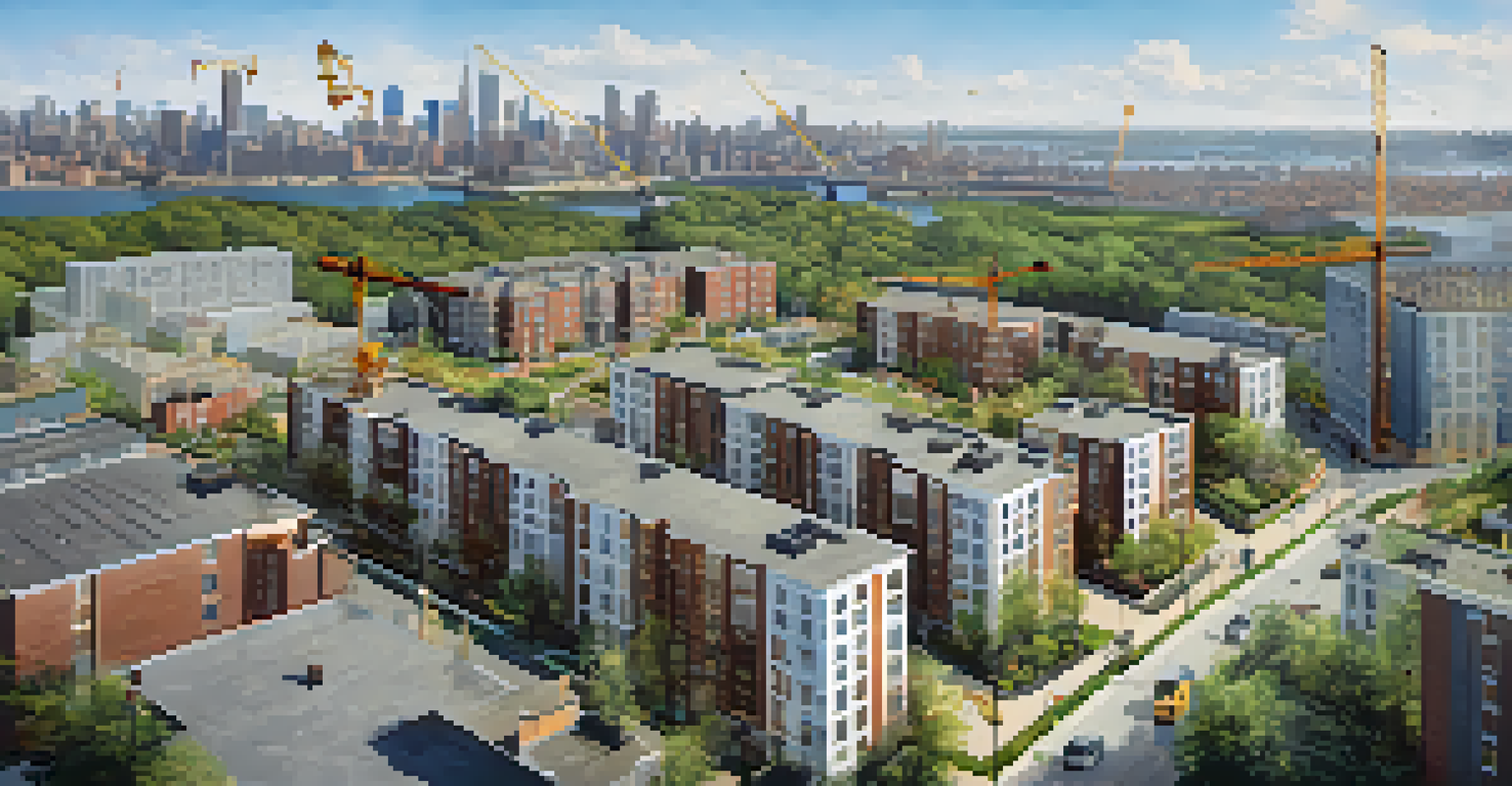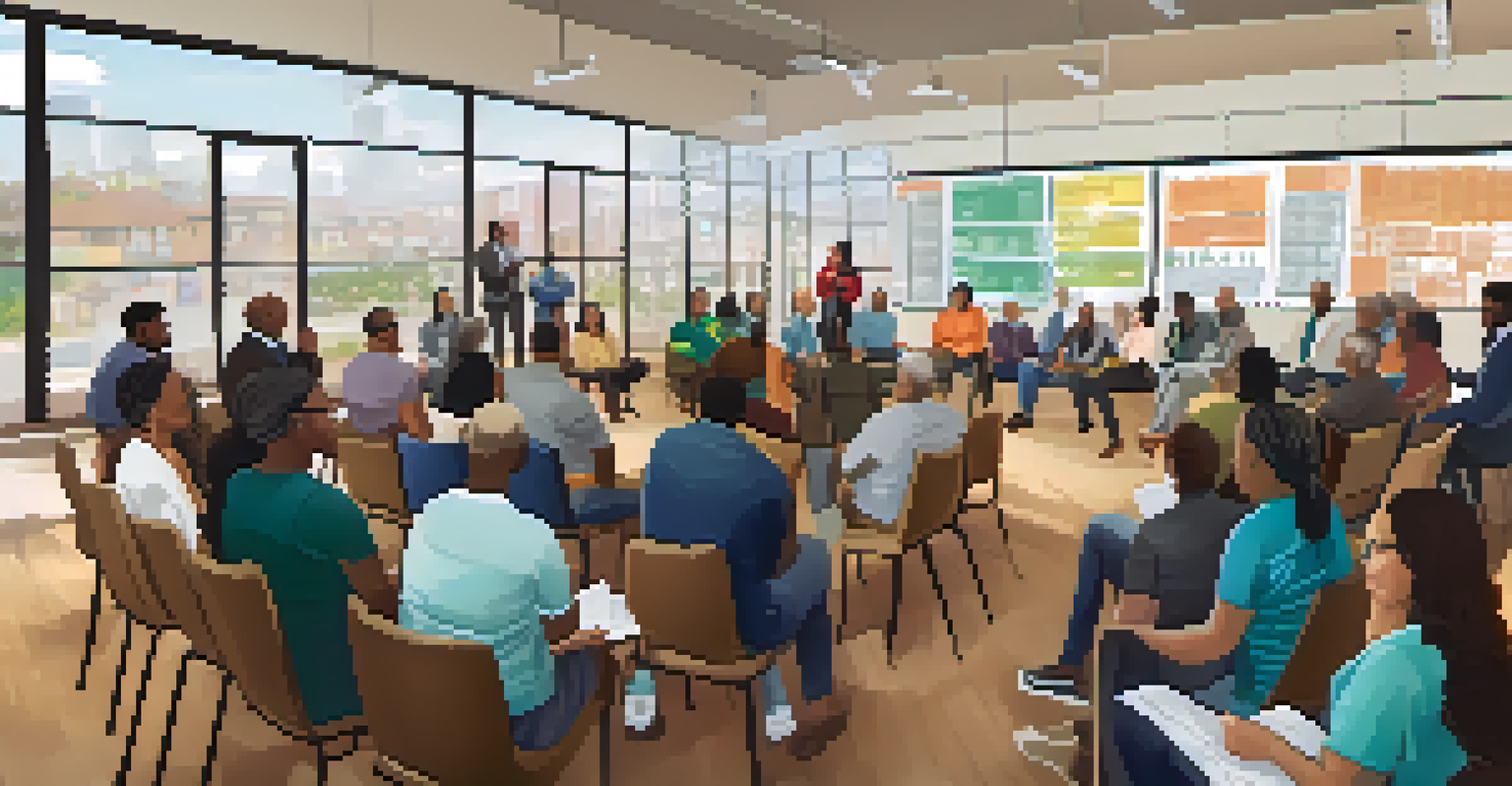Jersey City Housing Affordability: Trends and Insights

Overview of Housing Affordability in Jersey City
Jersey City has become a hotbed for real estate activity in recent years. Housing affordability has emerged as a critical concern for many residents. With its proximity to Manhattan and vibrant community, the demand for housing continues to rise, significantly impacting prices.
Affordable housing is a critical issue that affects the entire community, not just those who are struggling to make ends meet.
As we dive into the factors affecting affordability, it's essential to understand the local market dynamics. The interplay between supply and demand plays a pivotal role in determining what's available for potential buyers and renters. This has led to a complex landscape where many struggle to find affordable options.
In 2023, the average home price in Jersey City soared, further raising eyebrows over affordability. As we explore this topic, we’ll uncover the trends, challenges, and insights that define the current housing market in this bustling city.
Current Market Trends Affecting Housing Prices
In recent years, Jersey City has experienced a surge in housing prices, driven by a combination of factors. The influx of young professionals and families seeking a vibrant urban lifestyle has created a competitive market. This demand often outpaces supply, pushing prices higher.

Moreover, the COVID-19 pandemic has reshaped housing preferences, with many people seeking larger spaces or homes with outdoor areas. As a result, previously affordable neighborhoods have seen dramatic price increases, making it challenging for first-time buyers to enter the market.
Rising Demand Drives Housing Prices
The influx of residents seeking vibrant urban living has resulted in a competitive market that significantly increases housing prices in Jersey City.
Additionally, the rise of remote work has allowed many to consider housing options outside of traditional commuting zones. This shift has intensified competition for homes in Jersey City, further complicating affordability for those already living there.
Impact of Economic Factors on Housing Affordability
Economic factors significantly influence housing affordability in Jersey City. Interest rates, for example, have fluctuated, impacting mortgage rates and monthly payments. Higher interest rates can make it difficult for potential homebuyers to secure financing, leading to a decline in purchasing power.
Housing is a human right, and we must work to ensure that everyone has access to safe and affordable homes.
Inflation is another factor that can't be overlooked. Rising costs for goods and services can squeeze household budgets, leaving less available for housing expenses. This economic pressure can result in more people seeking rental properties rather than purchasing homes.
Furthermore, local job market trends and wage growth play crucial roles in determining what residents can afford. If wages do not keep pace with rising housing costs, many families may find themselves priced out of the market.
Government Policies and Housing Initiatives
Government policies can have a profound effect on housing affordability in Jersey City. Initiatives aimed at increasing affordable housing stock are essential for addressing the needs of lower-income residents. Programs that provide financial assistance or incentives for developers can help create more equitable housing options.
Zoning regulations also play a critical role in shaping the housing landscape. Changes in zoning laws can facilitate the development of multi-family homes, which can help alleviate the pressure on the housing market. By allowing for more diverse housing types, cities can cater to various income levels.
Economic Factors Impact Affordability
Fluctuating interest rates and inflation are squeezing household budgets, making it harder for families to afford homes in Jersey City.
Additionally, local governments often collaborate with non-profit organizations to support housing initiatives. These partnerships can lead to innovative solutions that enhance affordability while fostering community development.
Challenges Faced by Jersey City Residents
Despite ongoing efforts to improve housing affordability, residents of Jersey City face numerous challenges. One of the most significant issues is the lack of available affordable units. Many people find themselves competing for a limited number of options, driving prices even higher.
Another challenge is the increasing cost of living, which can make it difficult for residents to allocate funds for housing. As expenses like transportation, food, and healthcare rise, many families may find it hard to keep up with housing costs. This financial strain can lead to difficult choices and sacrifices.
Moreover, the rapid gentrification of certain neighborhoods can displace long-time residents, further complicating the affordability issue. As new developments cater to higher-income individuals, original residents may struggle to find suitable housing in their own communities.
Community Perspectives on Housing Affordability
Community voices play an essential role in shaping the conversation around housing affordability in Jersey City. Many residents are actively advocating for policies that prioritize affordable housing development. Through community meetings and local forums, these voices can influence decision-makers and drive meaningful change.
Personal stories also highlight the challenges faced by individuals and families in the housing market. For instance, a local teacher may share how rising rents have impacted her ability to live close to her job, forcing her to commute longer distances. Such narratives underscore the human side of the affordability crisis.
Community Advocacy for Affordable Housing
Residents and community organizations are actively pushing for policies that prioritize the development of affordable housing options.
Community organizations are also stepping up to address these issues. By providing resources and support, they empower residents to navigate the complexities of the housing market and advocate for their needs effectively.
Future Outlook for Jersey City Housing Affordability
Looking ahead, the future of housing affordability in Jersey City remains uncertain but hopeful. As demand continues to grow, there are calls for innovative solutions to address the affordability crisis. Stakeholders are encouraged to explore creative financing models and community partnerships to expand affordable housing options.
Additionally, local government initiatives aimed at increasing transparency and community involvement in housing development can lead to better outcomes. Engaging residents in the planning process fosters a sense of ownership and ensures that new developments meet the actual needs of the community.

Ultimately, the journey toward improved housing affordability in Jersey City will require collaboration among residents, developers, and policymakers. By working together, they can create a future where everyone has access to safe and affordable housing.